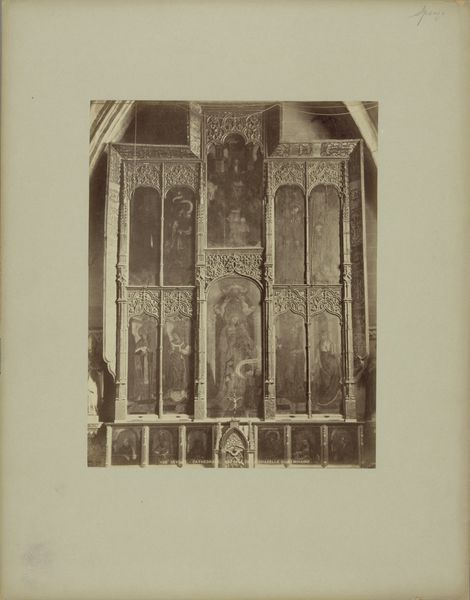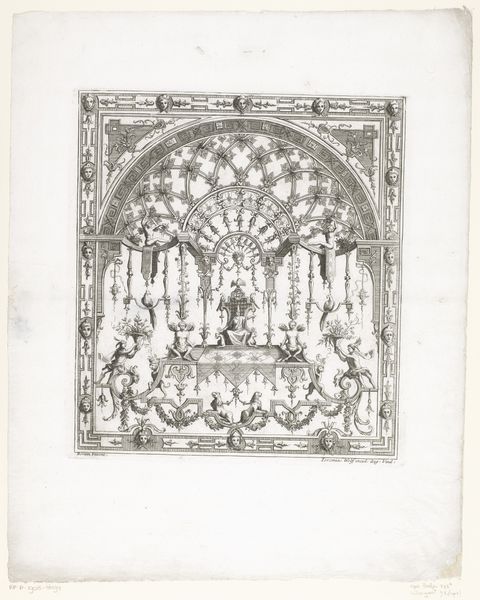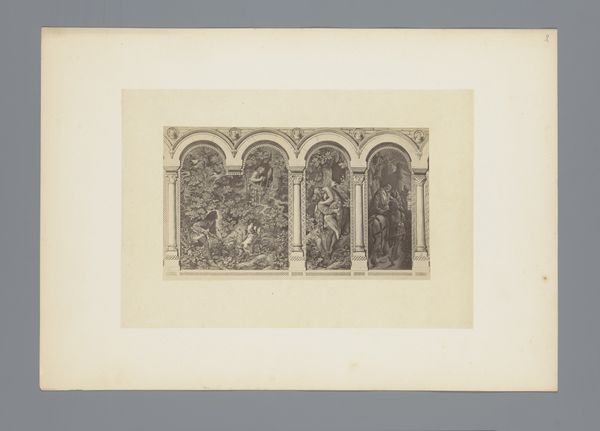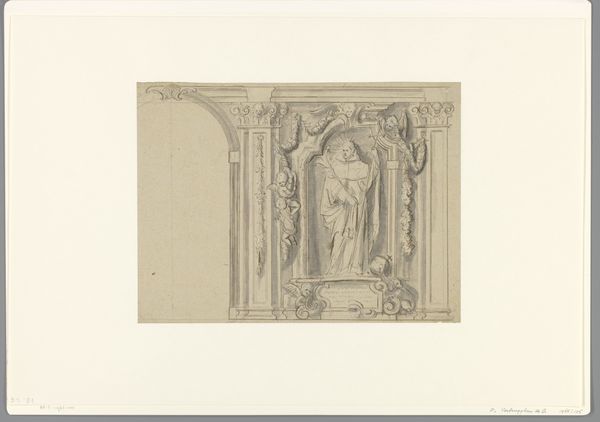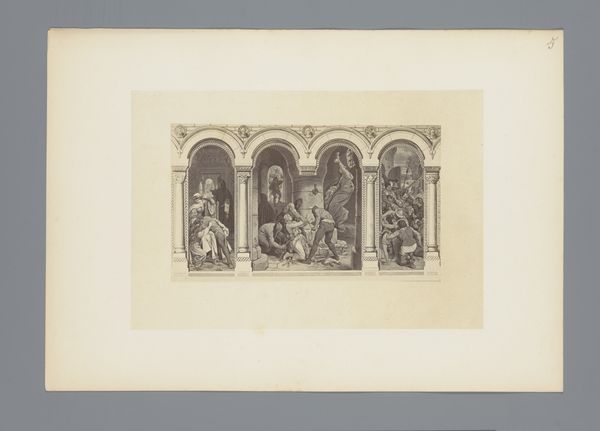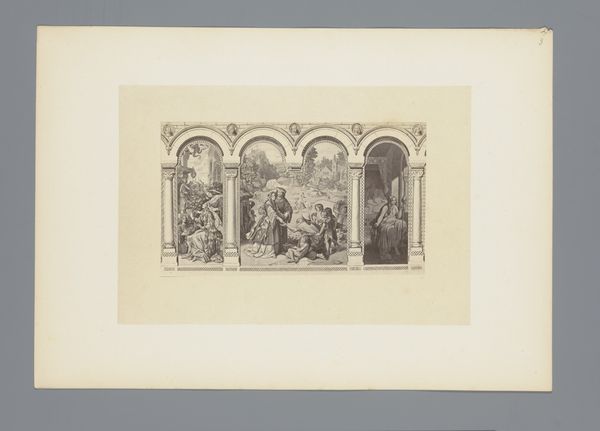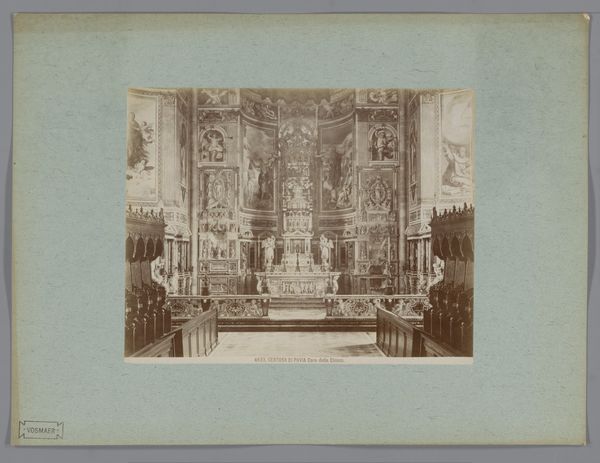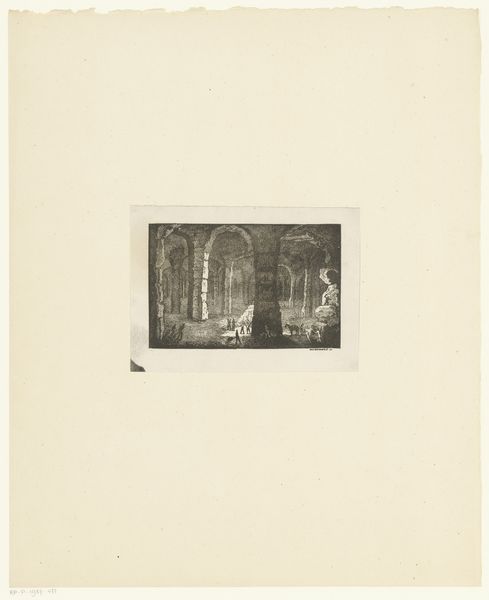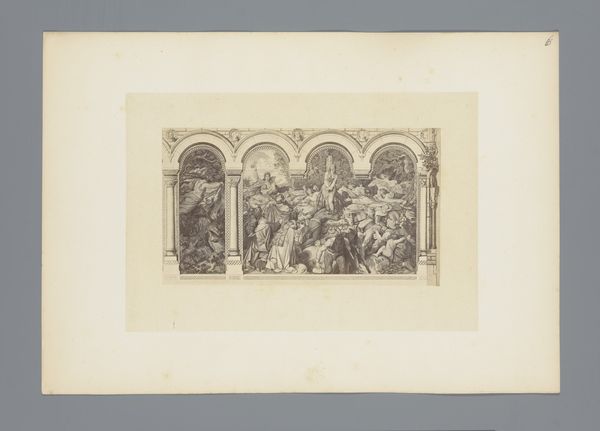
Dimensions: height 257 mm, width 257 mm, height 430 mm, width 541 mm
Copyright: Rijks Museum: Open Domain
Curator: Here we have a gelatin silver print of an altar with a reliquary and ivory Virgin Mary statue. The photograph captures the piece, crafted between 1869 and 1887 by an anonymous artist. What's your first reaction? Editor: It feels like a melancholic echo of a bygone era, doesn't it? The miniature altar and the depiction itself give it a sense of preciousness. I'm immediately drawn to its starkness and the way the photographer has captured the textures. It looks like a memory struggling to stay vivid. Curator: Absolutely. This altar exemplifies the revival of Gothic art that happened in the 19th century. Consider the socio-political landscape at that time— the desire for order, the re-establishment of traditional religious authority. It becomes clear that even aesthetically, it was about reinstating a symbolic order. Editor: I can't help but read the ivory Mary as more than just a religious symbol. Carved ivory at that period represents both the exquisite artistry of the piece but also the complex colonial narratives surrounding ivory as a commodity. Who had access to such rare, expensive materials? Who benefitted from it? Curator: A sharp point. The Gothic Revival, especially within religious contexts, played a specific role in reasserting institutional power. How would contemporary viewers respond to these overt displays, versus people now? The choice to replicate such an ornate, traditional altar reflects a particular message being sent to the public, doesn’t it? Editor: I wonder about its impact, and whose gaze was intended, not just then but now. Today we must reflect on what this image— this altar — meant within power structures back then, and how we internalize these visuals even now. It challenges us to engage with not just artistic beauty, but also its entangled legacies. Curator: A valuable insight that compels a richer reading of this artwork beyond its surface appeal. Thank you for shedding light on that complexity. Editor: Thanks, that was insightful; viewing it through a contemporary lens allows us to interrogate these historical expressions.
Comments
No comments
Be the first to comment and join the conversation on the ultimate creative platform.
